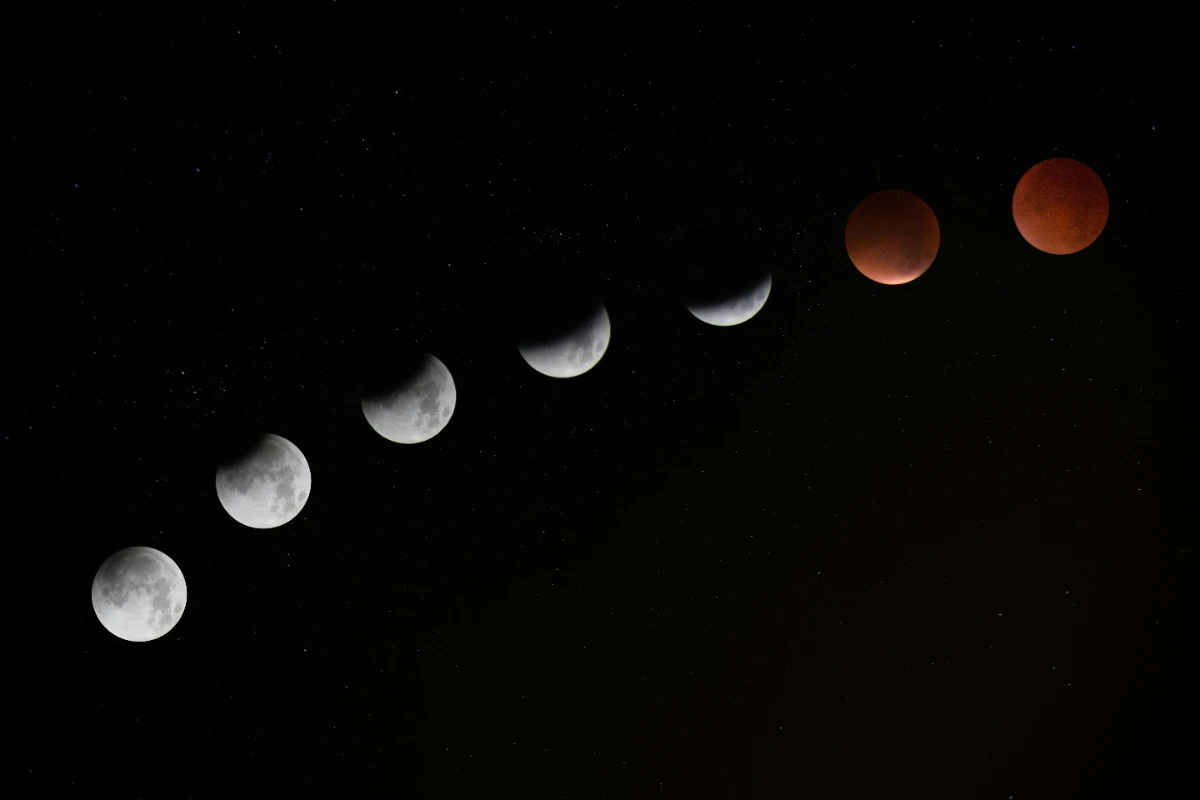| Summary |
|
A total lunar eclipse will paint the Moon red on September 7–8, 2025, visible across Europe, Africa, Asia, and Australia. Known as a “Blood Moon,” the event happens when Earth blocks direct sunlight from reaching the Moon, causing it to glow in shades of red. The eclipse will last for about five hours, with totality peaking at 6:11 p.m. UTC on September 7.
During this eclipse, observers in North America may see the start or end, depending on time zones. The rest of the world can watch the full sequence unfold, from the faint penumbral stage to the deep red of totality.
What is a Blood Moon?
The term “Blood Moon” refers to the reddish color the Moon takes on during a total lunar eclipse. The color isn’t mystical; it comes from basic physics. When the Sun, Earth, and Moon line up, Earth blocks sunlight. But Earth’s atmosphere bends some of that light around its edges. Shorter blue wavelengths scatter, leaving behind longer red wavelengths that illuminate the Moon.
The exact shade depends on the atmosphere at the time. Dust, smoke, or volcanic ash can make the Moon appear darker or more orange. On clearer nights, the red can look brighter.
How does a Lunar Eclipse occur?
A lunar eclipse occurs when the Moon moves into Earth’s shadow. The process has three stages. First, the penumbral phase makes the Moon appear slightly dimmer. Next, the partial phase begins as Earth’s central shadow takes a bite out of the Moon. Finally, the total phase, or umbra, covers the Moon completely.
Unlike solar eclipses, lunar eclipses are safe to watch with the naked eye. No special glasses are needed, though binoculars or a telescope can reveal surface details during the dim red glow.
History
Ancient cultures often saw lunar eclipses as omens. The Incas, for example, believed a jaguar was attacking the moon during an eclipse. Today, astronomers understand it as a natural alignment of Earth and its satellite.
In some cases, lunar eclipses line up with perigee (the point when the Moon is closest to Earth), creating what’s called a “supermoon eclipse.” That makes the Moon appear slightly larger in the sky. The September 2025 eclipse won’t coincide with perigee, but the view will still be striking.
Why observe an Eclipse?
Eclipses connect sky watchers to the rhythms of the solar system. They happen a few times a year, but total lunar eclipses are less frequent and widely anticipated. This one offers a long viewing window and a clear display of Earth’s shadow at work.
Astronomers recommend finding a dark location away from city lights for the best view. Apps such as SkySafari and NASA’s Eclipse Explorer will provide local timings. With clear skies, millions of people worldwide will have the chance to see the Moon turn red in real time.

